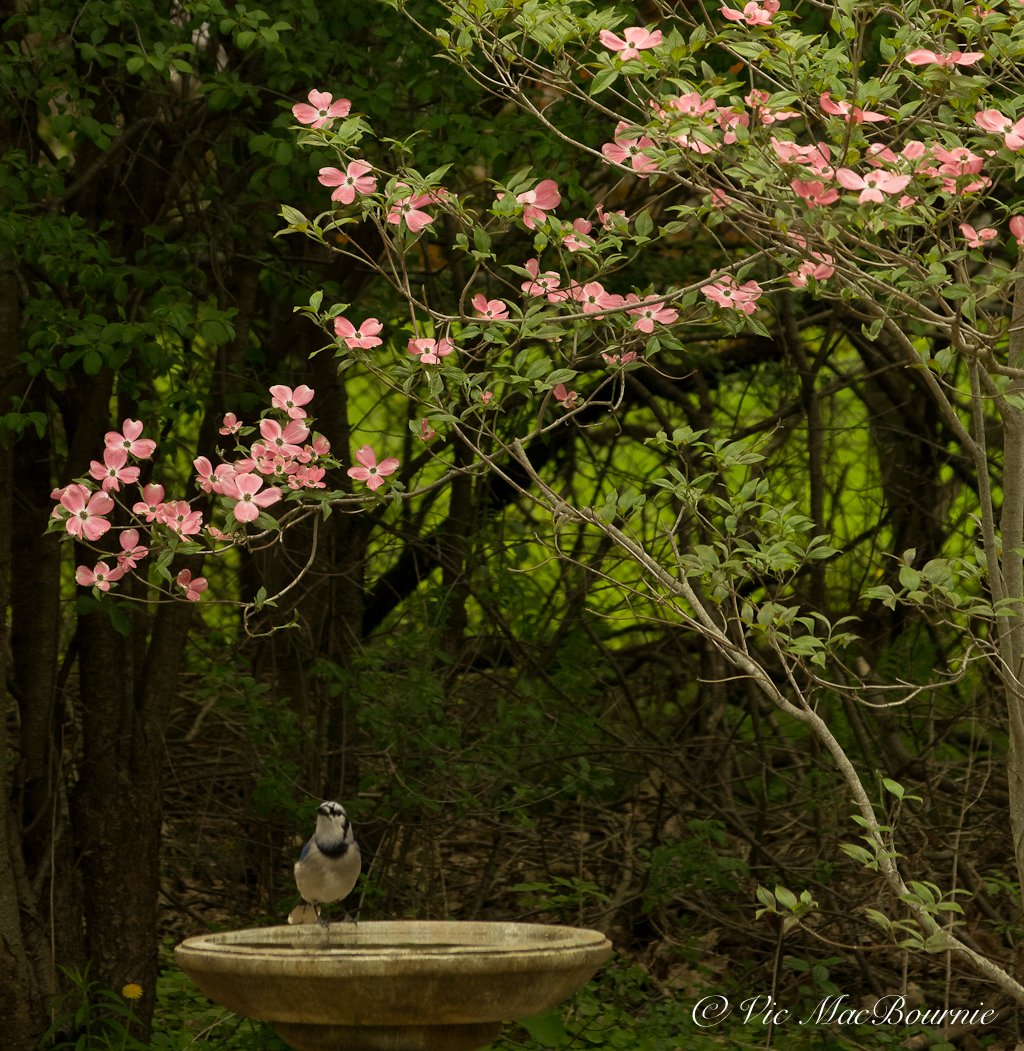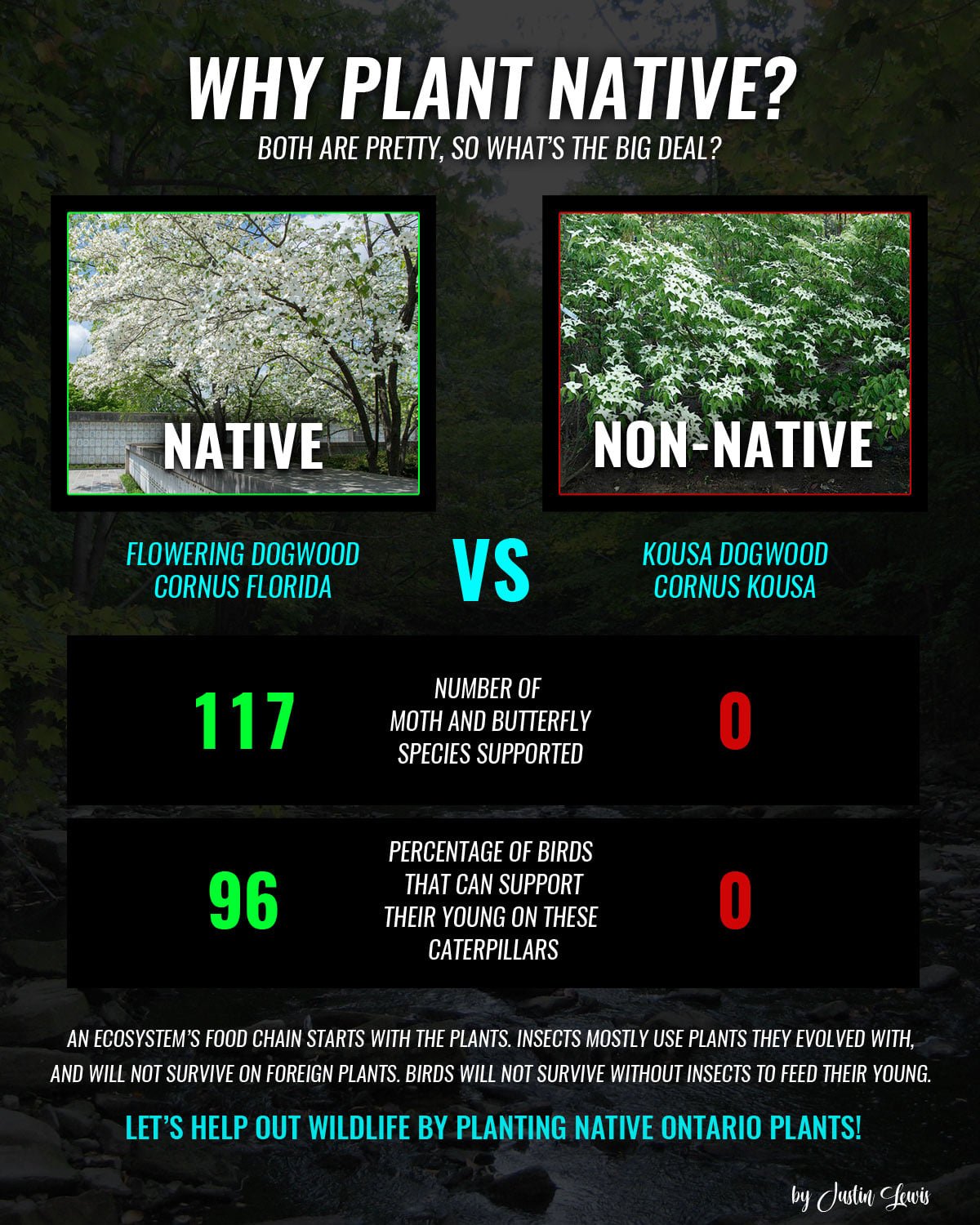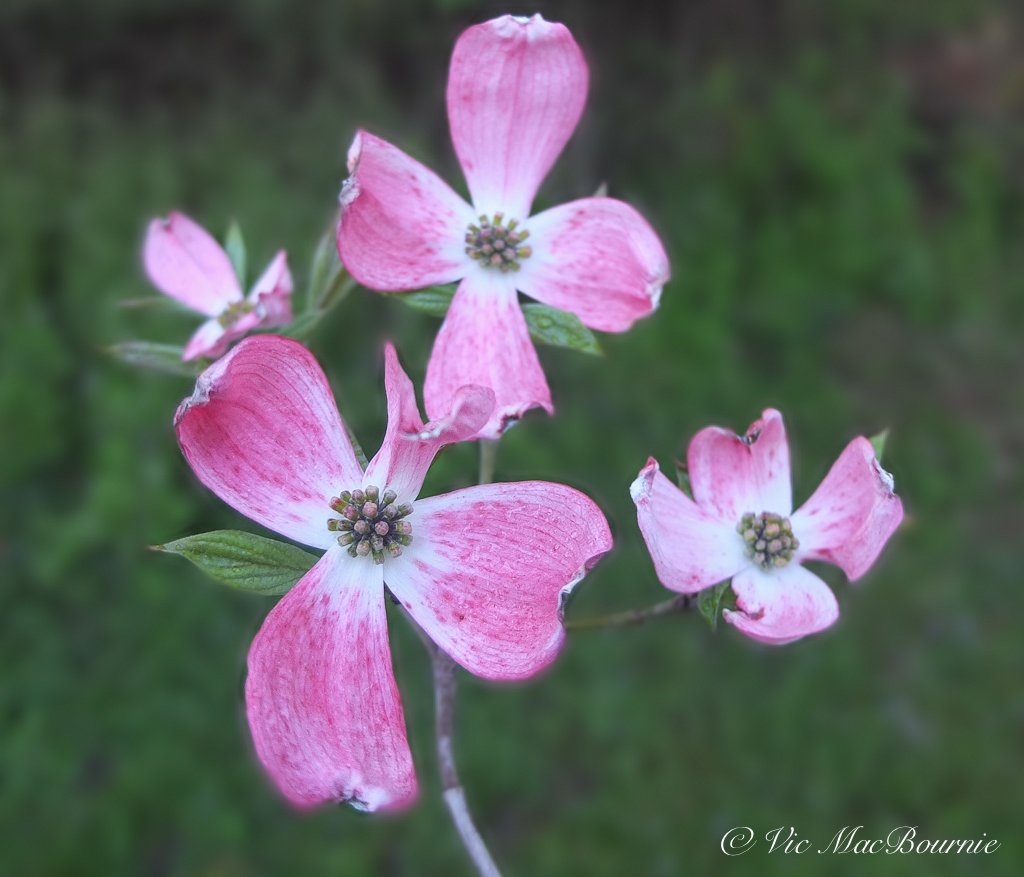Flowering Dogwood: The queen of the Woodland garden
The flowering dogwood is an icon of the American landscape with its spectacular spring flowers followed by red berries that birds cannot get enough of as they ripen.
The Flowering Dogwood (Cornus Florida) combines everything a gardener could want in a backyard tree.
If you are lucky enough to live in a region where you can grow this iconic native American flowering tree, whether it’s in your front as a specimen tree or as an understory tree in the backyard woodland or shade garden, you should waste no time sourcing one or even several for your front and back gardens.
In our backyard woodland garden, we have several that fill the garden with showy spring flowers followed by berries in summer and outstanding fall colour.
Its native range is New England south to northern Florida, west to the Mississippi and even beyond. In Canada it finds its range in Southern Ontario’s Carolinian zone.
In the cooler growing zones found in Northeastern U.S. and parts of Canada in zones 5-6 for example, Dogwoods can take more sun than the hotter zones farther south where they are best grown in light to partial shade.
Travelling through the Great Smokey Mountains and along the Blue Ridge Parkway in early spring is perhaps the ideal way to experience magnificent Flowering Dogwood and Redbuds both in full bloom along their still-bare branches.
The Flowering Dogwood grows to about 30-35-feet tall in the wild (often smaller in gardens) with a spread that is about two-thirds or almost equal to its height. It’s a wide spreading mounding tree with branches that can droop right to the ground if left to grow naturally. It likes to grow in partial shade to full sun and prefers moist to dry woodsy loam to a clay-loam.
Flowering Dogwoods flowers from March, April and May followed by clusters of 3-5 red berries (or drupes) from August through October – that are highly favoured by birds and other mammals. It is the queen of the Carolinian forest and and is at home growing in zones 2 through 9. Its mottled bark creates winter interest to the already elegant, horizontal branching of our native tree.
Be sure to check out my extensive article on the Six Best Dogwoods for the Woodland Garden.
More of my posts on Dogwoods
For more information on Dogwoods, please check out my other posts listed here:
Dogwoods: Find the perfect one for your yard
Cornus Kousa: Impressive non-native for the woodland garden
Bunchberry: The ideal native ground cover
Pagoda Dogwood: Small native tree ideal for any garden
Cornus Mas: An elegant addition to the Woodland Garden
The tree’s branching habit of stretching right to the ground suggests that it wants to protect its roots from harsh sun and other root-zone incursions, so it’s a good idea to provide some protection around the tree’s root zone.
A heavy mulch around the root zone will help to hold moisture as well as protect it from direct sun and the damage lawnmowers create when working closely to the tree’s trunk. Do not pile the mulch up around the trunk of the tree. Leave a well stretching several inches to a foot or two around the tree to limit disease and insects.
Our native dogwoods do suffer from disease including Anthracnose, which can take root after a long rainy, cool spring. Anthracnose can attack the flowers and leaves of the tree all summer long and, can eventually kill the tree if it persists for several seasons.
If planted in a location, preferably as an edge-of-the-woods tree, where it gets morning sun to burn off the moisture and dew from the flowers and leaves, Anthracnose is unlikely to be a problem. Ideally, the tree should be planted where it can get afternoon shade to help it escape the extreme heat.
The Flowering Dogwood has dark red to purple fall colour. In spring it makes a great companion for Witchhazel, Redbud and serviceberries as well as the non-native asian relative the Cornus Kousa.
Cherokee Chief is a particularly nice cultivar with a pinkish flowers colour. Some cultivars are available with a darker red colour but the native still stands out best with its white to cream-coloured flowers.
What’s the difference between Cornus Florida and Cornus Kousa?
It’s important to note that the native Flowering Dogwood is not the same as the non-native Cornus Kousa, which is a popular dogwood sold at many local nurseries.
Although the two understory trees share many similarities – including large white flowers followed by red fruit – their differences are so widespread that they are really not interchangeable in the landscape.
Where they do stand out in the landscape is when you can combine them for early spring flowering in the native dogwood, through summer and late summer flowering by the non-native Cornus Kousa. The combination brings the woodland to life in an elegant display of gorgeous dogwood blooms that last almost throughout the gardening season.
• Where the native dogwood flowers in spring into early summer, the Cornus Kousa flowers pick up where the native ones begin to die out and offers flowers into late summer.
• Where native dogwood flowers grow more or less on bare branches that really show off the flowering bracts, Cornus Kousa flowers later in summer after the leaves fill out on the tree providing a beautiful showing but not quite as impressive as that offered by the native Flowering Dogood.
•Where native dogwood’s fruit is more like a drupe in clusters of 3-5, Cornus Kousa tends to put out singular fruits that look like raspberries.
• Where native dogwoods grow in a mounding, horizontal habit, Cornus Kousa tends to grow in a vase shape that eventually sends out horizontal branching if left untrimmed.
• Where the native dogwood is susceptible to disease and deer predation, Cornus Kousa, is more or less free of these problems including Anthracnose.
• Where the native dogwood is a magnet for local wildlife both as a host plant for larvae and insects through to providing an excellent food source for birds and other mammals, Cornus Kousa is neither a host plant for native caterpillars and insects, nor are its berries a great source of food for birds. Some birds and mammals (Squirrels and chipmunks) will eat the fruit but its certainly not their first choice.
• Cornus Florida supports up to 117 moths and butterflies, whereas Cornus Kousa is not known to support any in the larval stage.
• Cornus Florida also supports close to 100 birds from caterpillars that use the tree as a food source, while Cornus Kousa is not known to support any birds as a larval host.
How to water a Dogwood tree
Since the dogwood grows in a very horizontal fashion it has a very wide “drip zone.” And, because this drip zone extends out so far from the trunk of the tree, it serves little to no purpose watering the tree close to its trunk.
Look up to establish how far the tree’s branches stretch out from the main trunk and use that as your watering zone for the tree. Slow, deep waterings are necessary to keep the soil around the tree’s roots cool and moist. An all-day drip being moved around a mature tree throughout the day would be ideal during hot, dry periods with low rainfall.
Smaller, or newly planted trees would need less watering, but be sure to water deeply around the entire perimeter of the tree.
How to prune a flowering dogwood
The dogwood is a slow growing tree that tends to self prune over time. Deadwood can be cut out as it appears, but it’s important to maintain the tree’s elegant horizontal branching habit rather than try to shape it into something it does not want to be.
If grass is growing under the tree (never a great idea, better to have either living, or bark mulch), it’s best to limb up the tree as it grows and then maintain it by pruning the trees outer branches lightly to reduce the weight of the branches laden with flowers.
Try not to heavily prune the tree by taking out large branches because you will be removing the best attributes of the tree – primarily its spring flowers. It is best to just remove the smaller outer branches to reduce the weight and thus help to keep the skirt of the tree high enough to walk under.
I always prefer, if possible, to plant the tree in an area where it can take on its natural shape and not be severely pruned up.
If you are unsure how to get the most out of your dogwood, it’s probably best to hire a well-respected pruning expert to maintain the shape of these trees. Ensure the tree company is familiar with pruning ornamental trees and not just one that specializes in removing trees or large dying branches.







